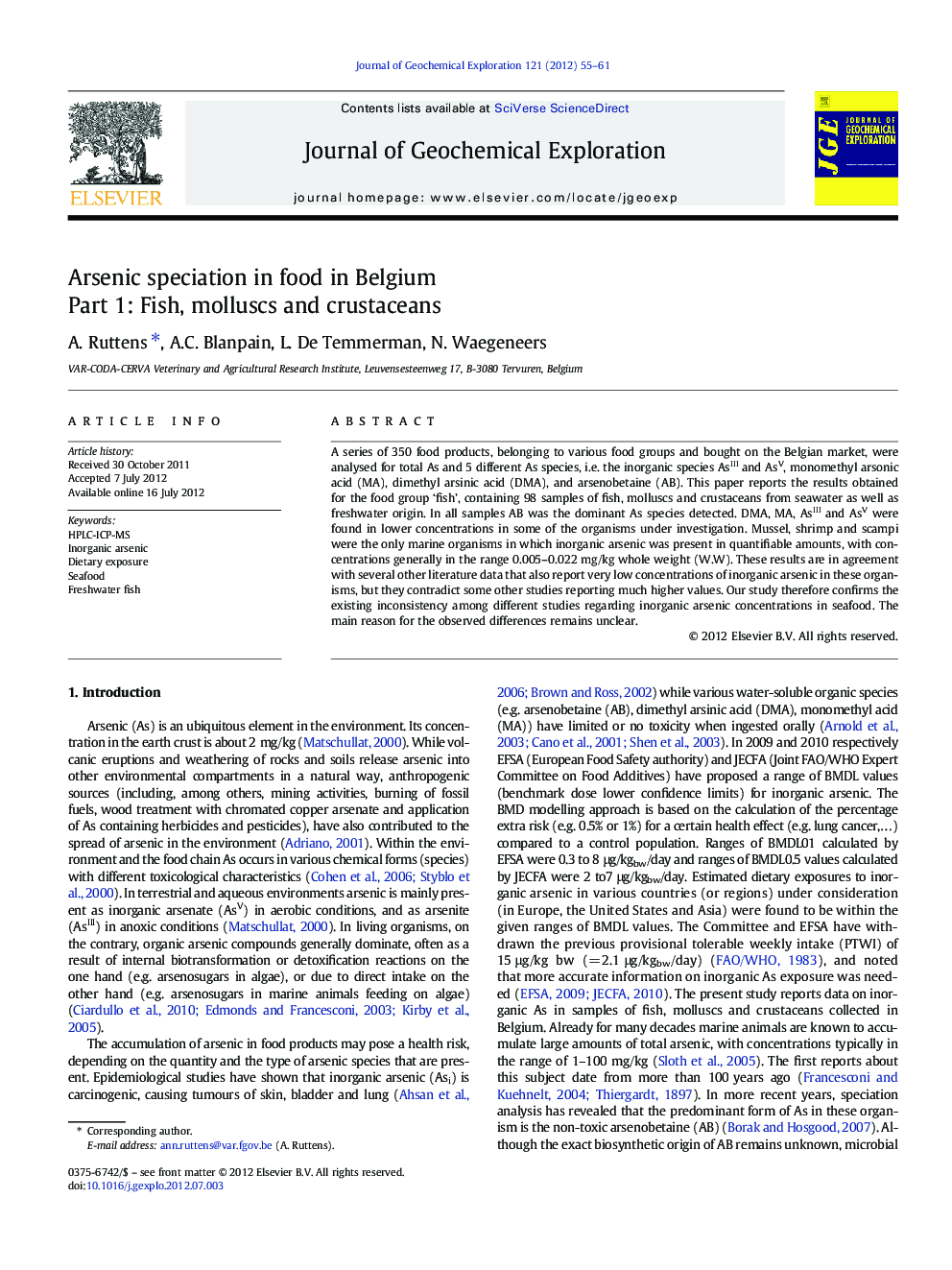| Article ID | Journal | Published Year | Pages | File Type |
|---|---|---|---|---|
| 4457649 | Journal of Geochemical Exploration | 2012 | 7 Pages |
A series of 350 food products, belonging to various food groups and bought on the Belgian market, were analysed for total As and 5 different As species, i.e. the inorganic species AsIII and AsV, monomethyl arsonic acid (MA), dimethyl arsinic acid (DMA), and arsenobetaine (AB). This paper reports the results obtained for the food group ‘fish’, containing 98 samples of fish, molluscs and crustaceans from seawater as well as freshwater origin. In all samples AB was the dominant As species detected. DMA, MA, AsIII and AsV were found in lower concentrations in some of the organisms under investigation. Mussel, shrimp and scampi were the only marine organisms in which inorganic arsenic was present in quantifiable amounts, with concentrations generally in the range 0.005–0.022 mg/kg whole weight (W.W). These results are in agreement with several other literature data that also report very low concentrations of inorganic arsenic in these organisms, but they contradict some other studies reporting much higher values. Our study therefore confirms the existing inconsistency among different studies regarding inorganic arsenic concentrations in seafood. The main reason for the observed differences remains unclear.
► Total As varies strongly between species and between individuals of the same species. ► Arsenobetaine was the main arsenic species in all organisms under investigation. ► In all fish inorganic arsenic concentration (Asi) was < 0.003 mg kg− 1. ► Mussel, shrimp and scampi contained max. 0.005–0.022 mg kg− 1 Asi. ► An intake calculation of Asi by the Belgian population will be made in a next step.
